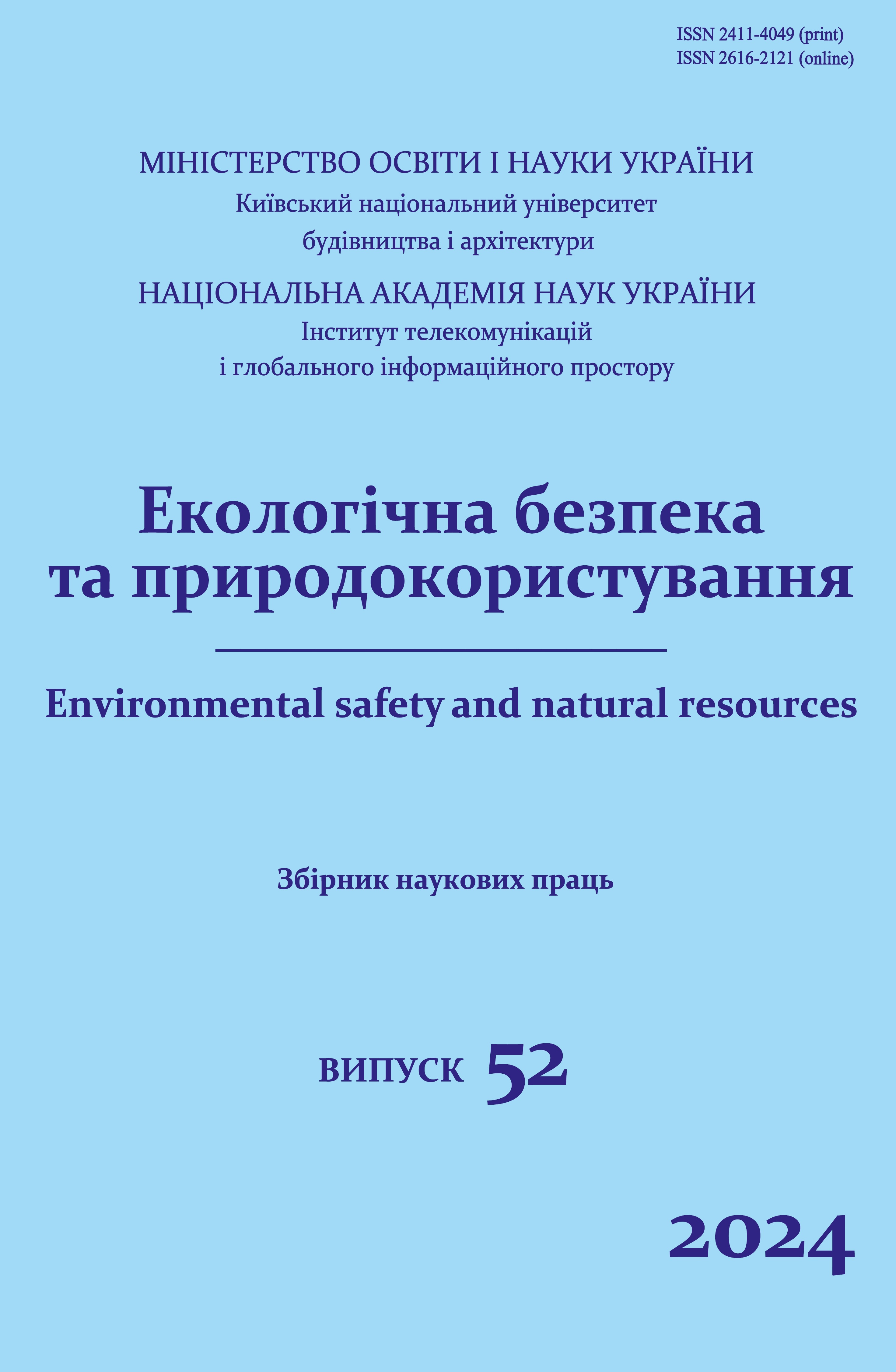Reducing the level of acoustic pollution generated by road transport
DOI:
https://doi.org/10.32347/2411-4049.2024.4.81-91Keywords:
noise level, sound pressure level, calculation model, shieldingAbstract
The current rate of construction and the level of technological development lead to a significant increase in the level of acoustic pollution in the urban environment. Usually, efforts to minimize the negative effects of noise on humans are limited to formal acoustic solutions at the design stage, but even more often – to the implementation of construction-acoustic solutions at the stage of an already implemented object. In pursuit of the desire to satisfy the buyer and obtain financial benefit, Ukrainian developers neglect project decisions and recommendations on noise and vibration protection issues and as a result, create problems not only for their customers, but also negatively affect the environment in general. The reasons for such a negative impact are: lack of acoustic solutions aimed at reducing noise and vibration from engineering equipment and its incorrect placement, incorrect placement of residential buildings in relation to already existing stationary sources of noise (motorways, railways, airports, existing industrial and production zones). Also, the reasons for the negative impact of noise on the environment include the lack of a global strategy for assessment, forecasting and development of methods of combating noise pollution. This strategy will make it possible to assess the general level of noise pollution in cities, the presence and number of "quiet zones" (territories with no excesses of permissible noise levels), and to create noise maps. The purpose of this work is an example of an acoustic approach, when at the stage of reconstruction of highway M 01, on the Kyiv-Chernihiv section, the necessity of applying acoustic solutions to reduce the noise load on the territory of residential buildings located in close proximity to the road was determined. The result of the work is an assessment of the presence of exceeding permissible noise levels and the development of constructive solutions to minimize acoustic pollution. The use of acoustic screens was chosen as a constructive solution. On-site acoustic measurements were carried out as a tool for assessing the exceedances of permissible noise levels in the residential area. The construction of a calculation model was chosen as a method for predicting the reduction of noise levels. The practical value of this work lies in the preliminary assessment of possible acoustic pollution at the design stage.
References
WHO. (2019). Environmental health inequalities in Europe. Second assessment report (2019), WHO Regional Office for Europe, Copenhagen. 30-34 p.
Biological mechanisms related to cardiovascular and metabolic effects by environmental noise (2018), WHO Regional Office for Europe, Copenhagen.
European Environment Agency. (2020). Environmental noise in Europe. Copenhagen, Denmark. 23-27 p.
EASA, et al. (2019). European aviation environmental report 2019. European Union Aviation Safety Agency, Cologne, Germany.
Francis, C. D. and Barber, J. R. (2013). A framework for understanding noise impacts on wildlife: an urgent conservation priority. Frontiers in Ecology and the Environment, 11(6), 305-313.
HELCOM. (2019). Noise sensitivity of animals in the Baltic Sea. Underwater noise. Baltic Sea Environment Proceedings 167. Baltic Marine Environment Protection Commission. 13-18 p.
DBN V.1.1-31:2013. Protection of territories, buildings and structures from noise. [Effective from 2014-01-06]. Kyiv: Ministry of Regional Development, Construction and Housing and Communal Services of Ukraine (In Ukrainian). [ДБН В.1.1-31:2013. Захист територій, будинків і споруд від шуму. [Чинний від 2014-01-06]. Київ: Міністерство регіонального розвитку, будівництва та житлово-комунального господарства України].
Decision No 1386/2013/EU of the European Parliament and of the Council of 20 November 2013 on a General Union Environment Action Programme to 2020 ‘Living well, within the limits of our planet’. OJ L 354/171; 28.12.2013.
Directive 2002/49/EC of the European Parliament and of the Council of 25 June 2002 relating to the assessment and management of environmental noise. OJ L 189, 18.7.2002.
EEA. (2016). Quiet areas in Europe – the environment unaffected by noise pollution, EEA Report No 14/2016, European Environment Agency. 80 p.
ACEA. (2017). Vehicles in use – Europe 2017. European Automobile Manufacturers' Association.
Public Law 92-574, Oct. 27, 1972. 17 p.
"On the approval of the State sanitary norms of permissible noise levels in the premises of residential and public buildings and on the territory of residential buildings." Order of the Ministry of Health of Ukraine No. 463 of February 22, 2019 (In Ukrainian). [«Про затвердження Державних санітарних норм допустимих рівнів шуму в приміщеннях житлових та громадських будинків і на території житлової забудови». Наказ МОЗ України N 463 від 22.02.2019].
DSTUNB V.1.133:2013. Guidelines for calculation and design of noise protection of agricultural areas. [Effective from 20140101]. Edition officer. Kyiv: Ministry of the Region of Ukraine, 2014 (In Ukrainian). [ДСТУ-Н Б В.1.1-33:2013 Настанова з розрахунку та проектування захисту від шуму сельбищних територій. [Чинний від 2014-01-01]. Вид. офіц. Київ: Мінрегіон України, 2014].
DSTU-NB V.1.1-32:2013. Guidelines for the design of noise protection in premises by means of sound absorption and shielding. [Effective from 2014-01-01]. Edition officer. Kyiv: Ministry of the Region of Ukraine, 2014 (In Ukrainian). [ДСТУ-Н Б В.1.1-32:2013 Настанова з проектування захисту від шуму в приміщеннях засобами звукопоглинання та екранування. [Чинний від 2014-01-01]. Вид. офіц. Київ: Мінрегіон України, 2014].
Downloads
Published
How to Cite
Issue
Section
License
Copyright (c) 2024 A.V. Maksymenko, I.V. Klimova

This work is licensed under a Creative Commons Attribution 4.0 International License.
The journal «Environmental safety and natural resources» works under Creative Commons Attribution 4.0 International (CC BY 4.0).
The licensing policy is compatible with the overwhelming majority of open access and archiving policies.

